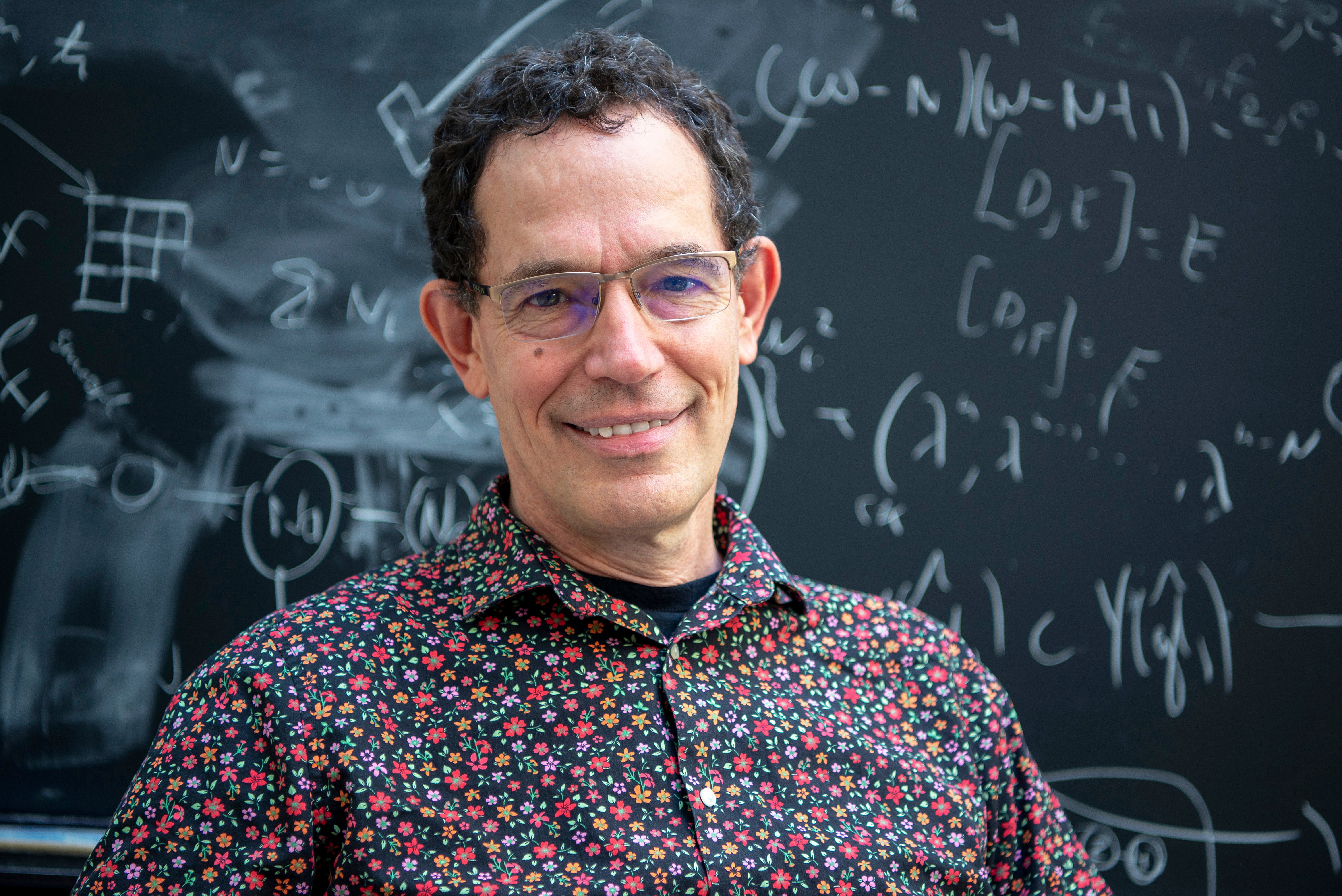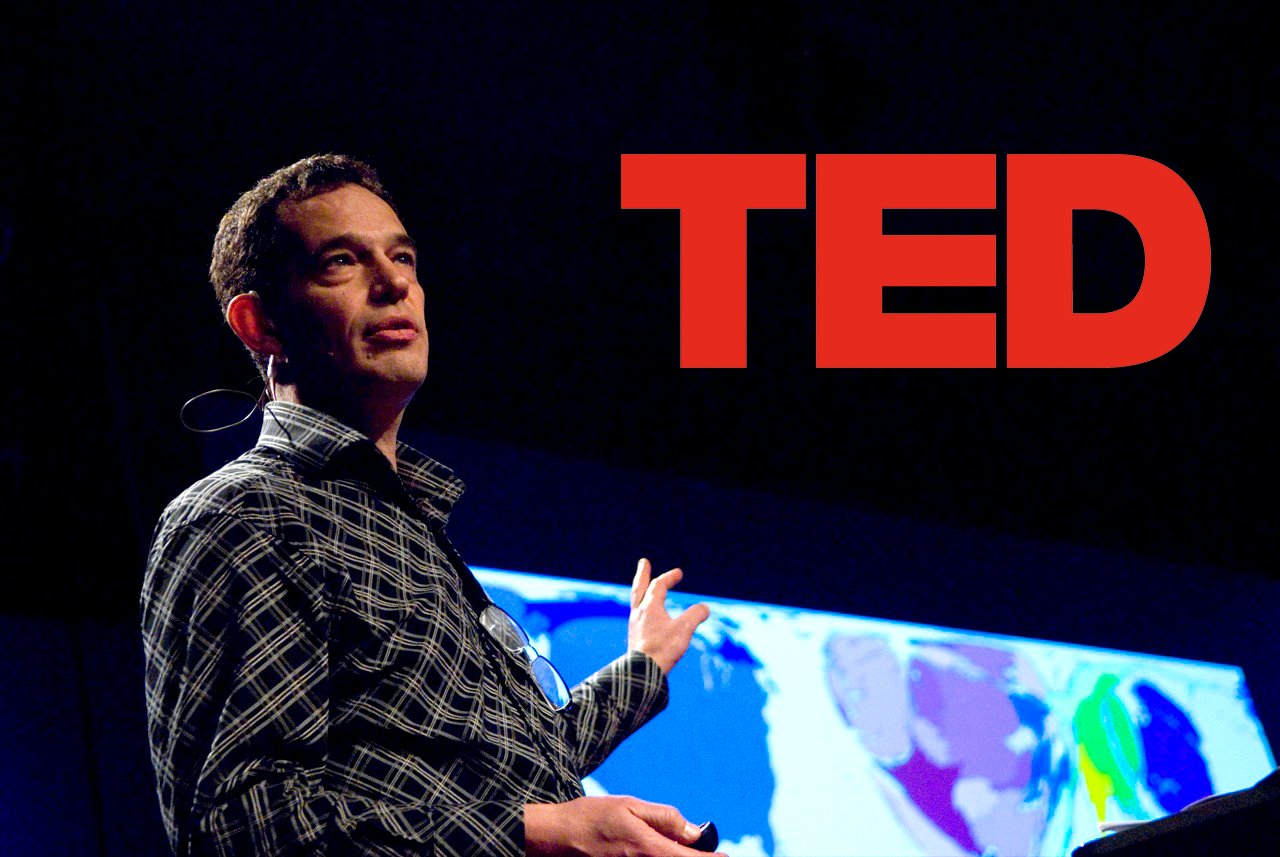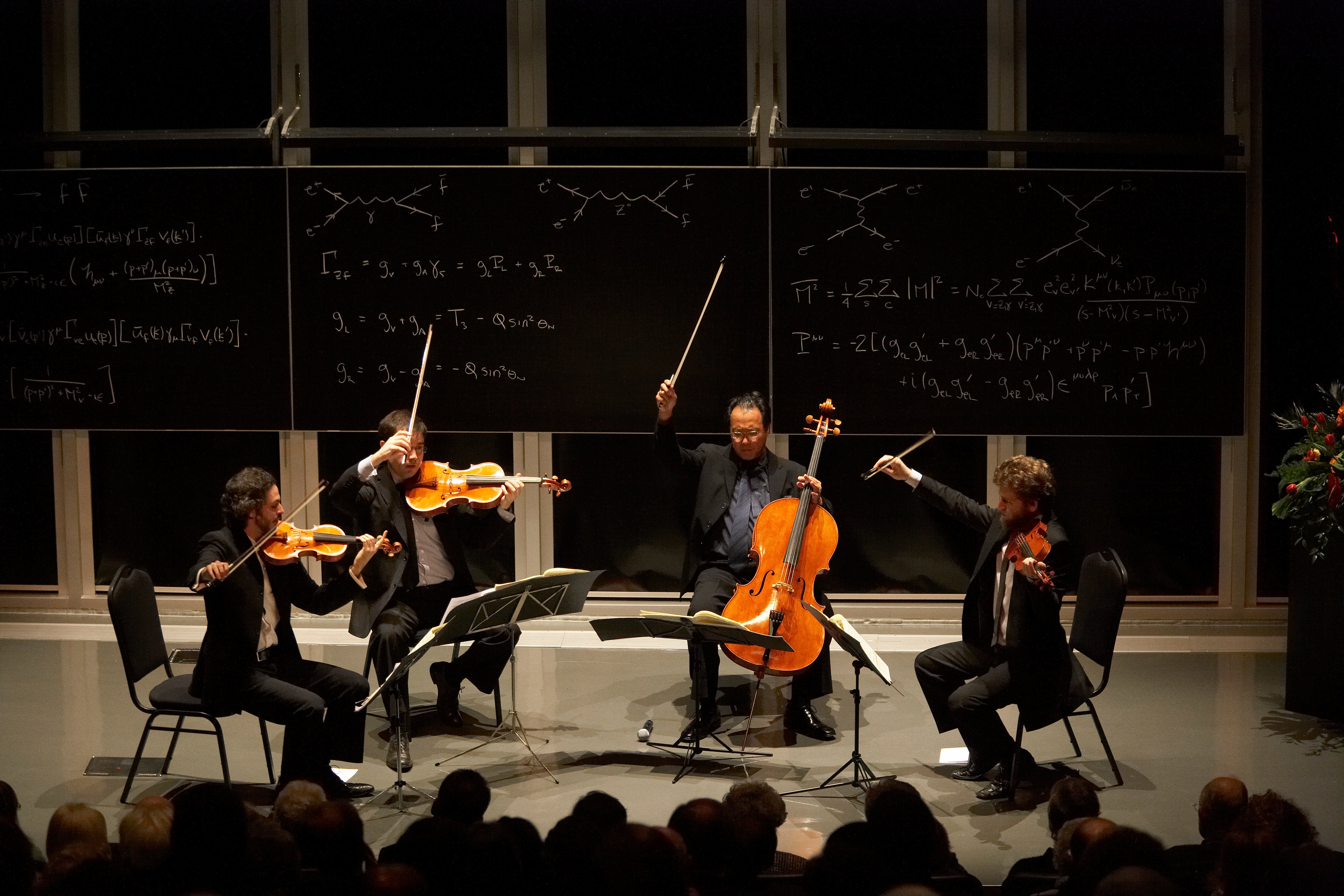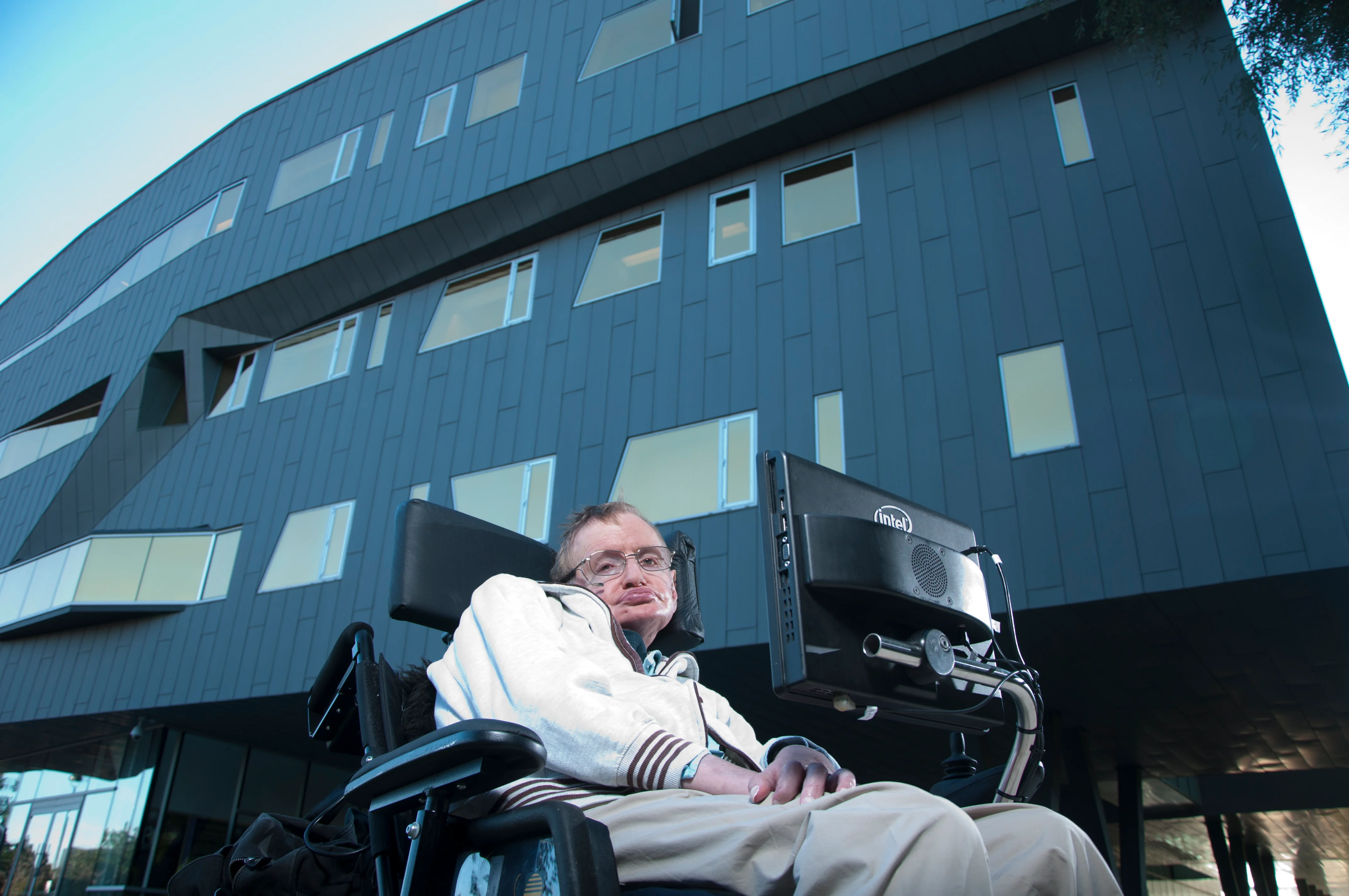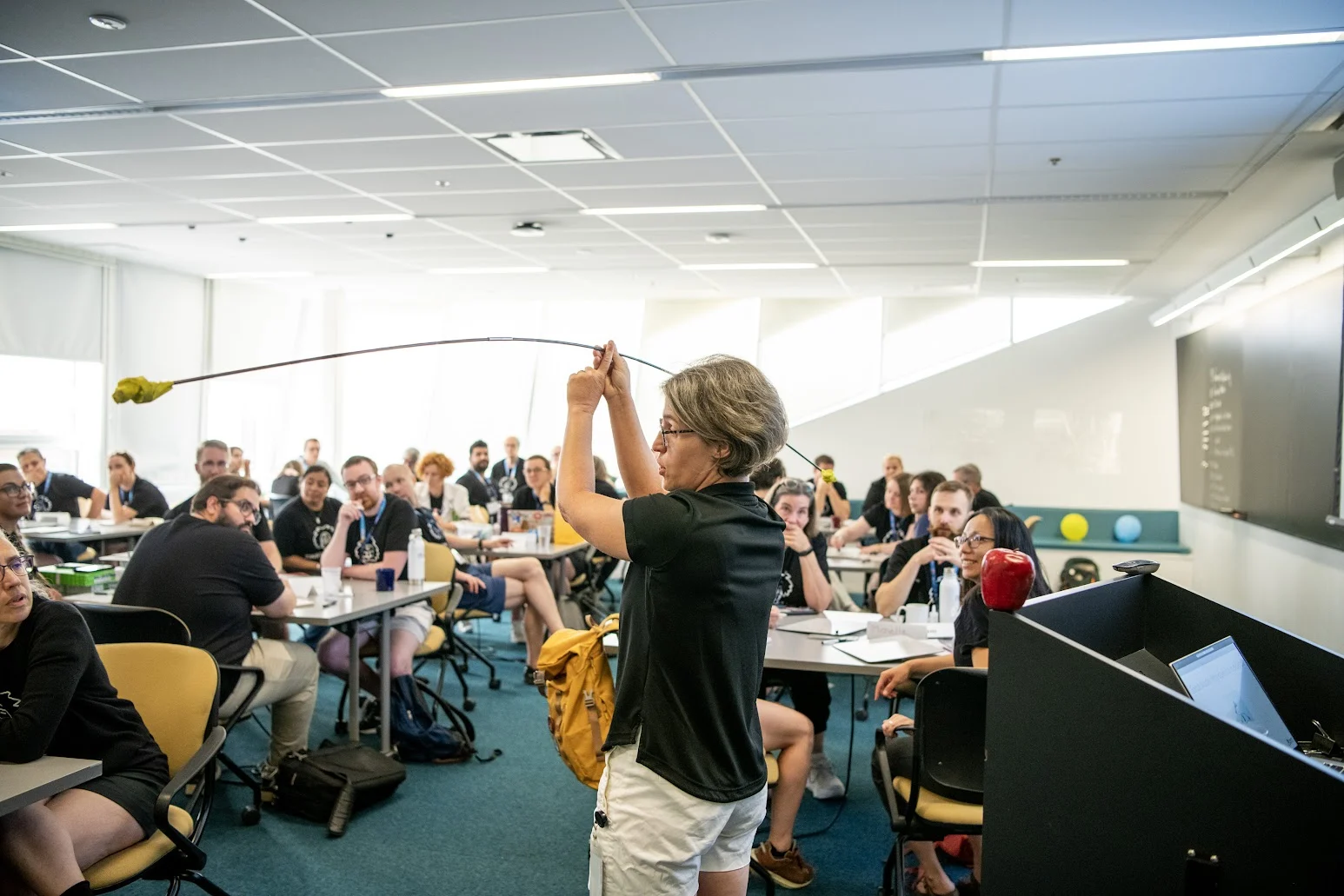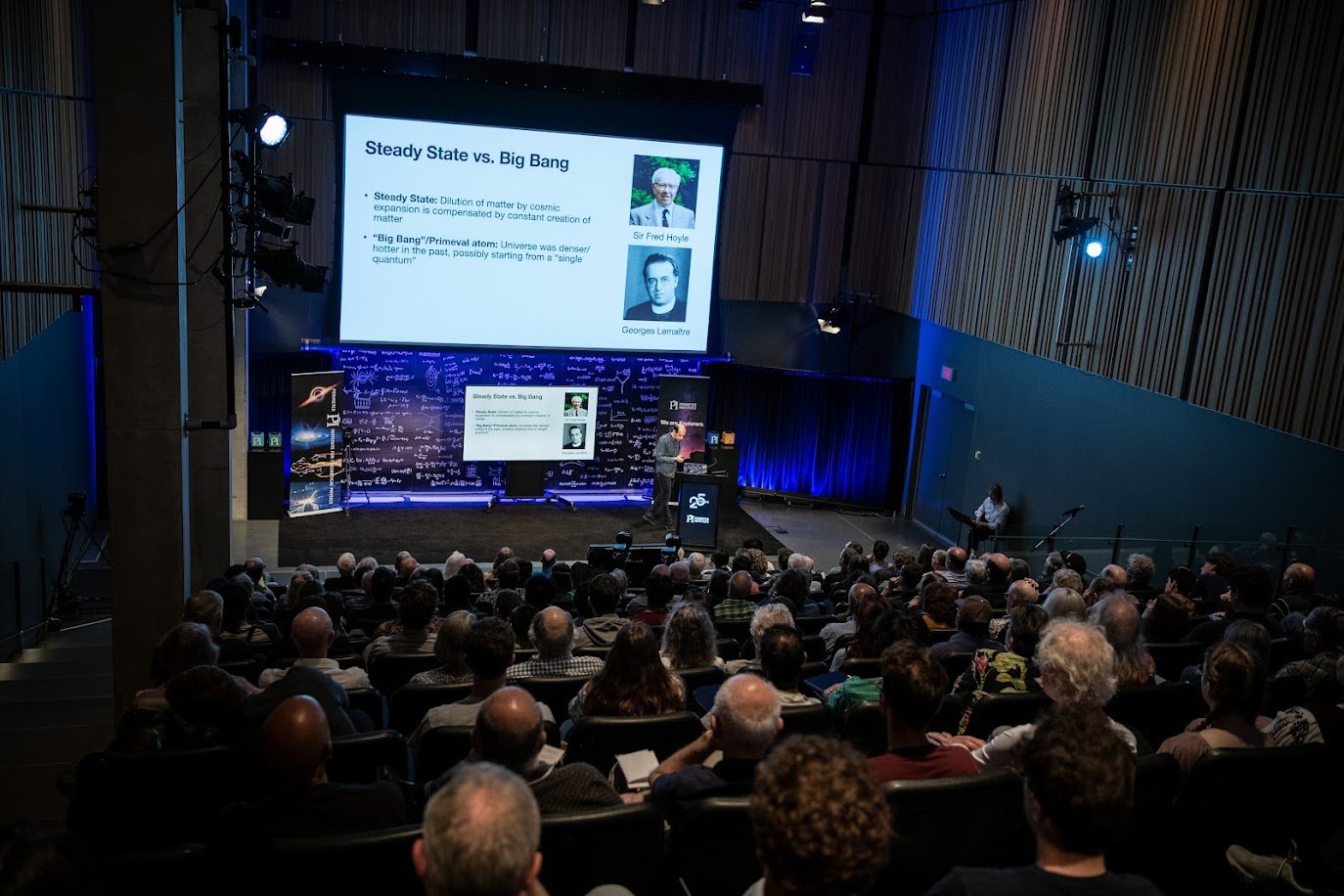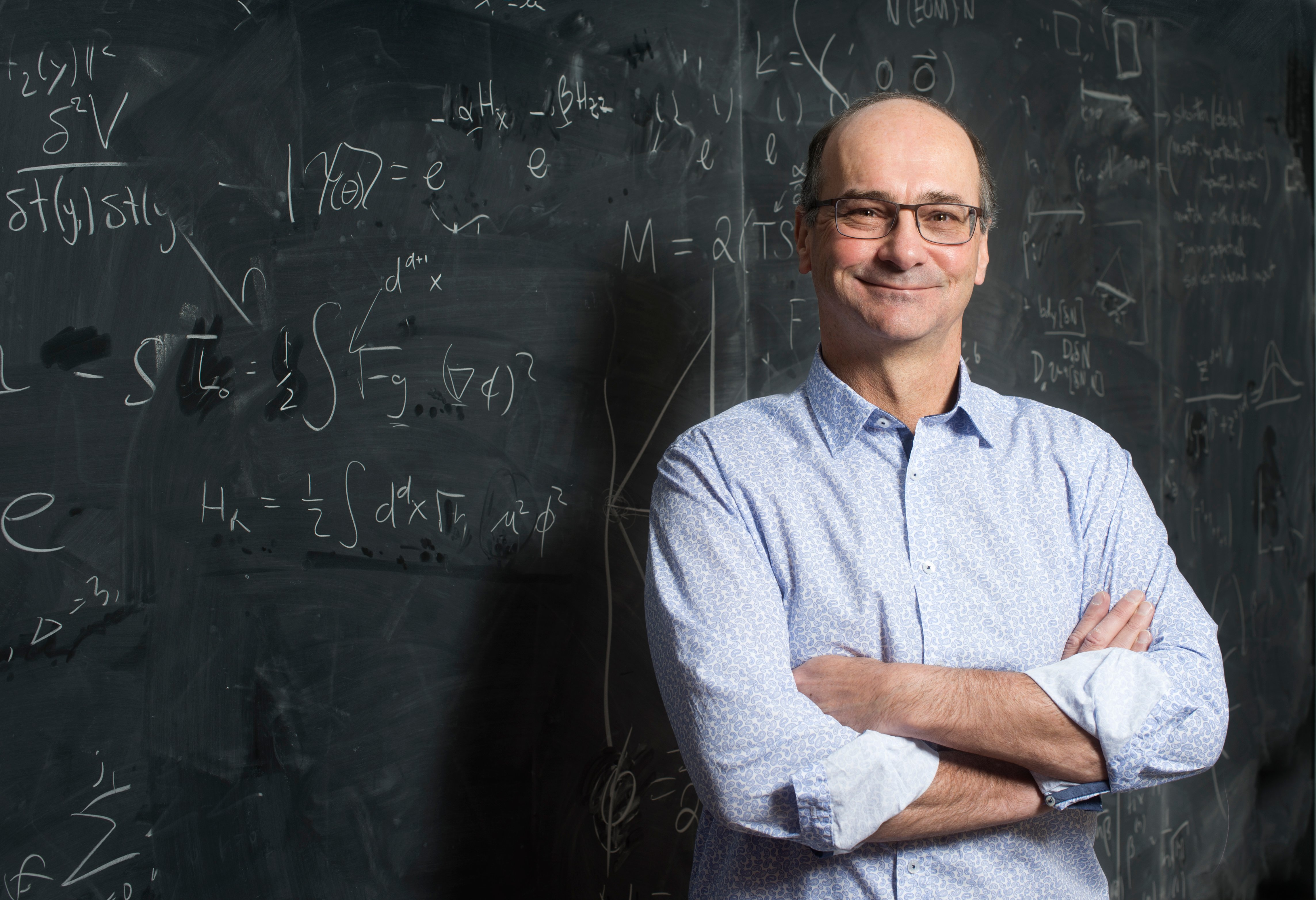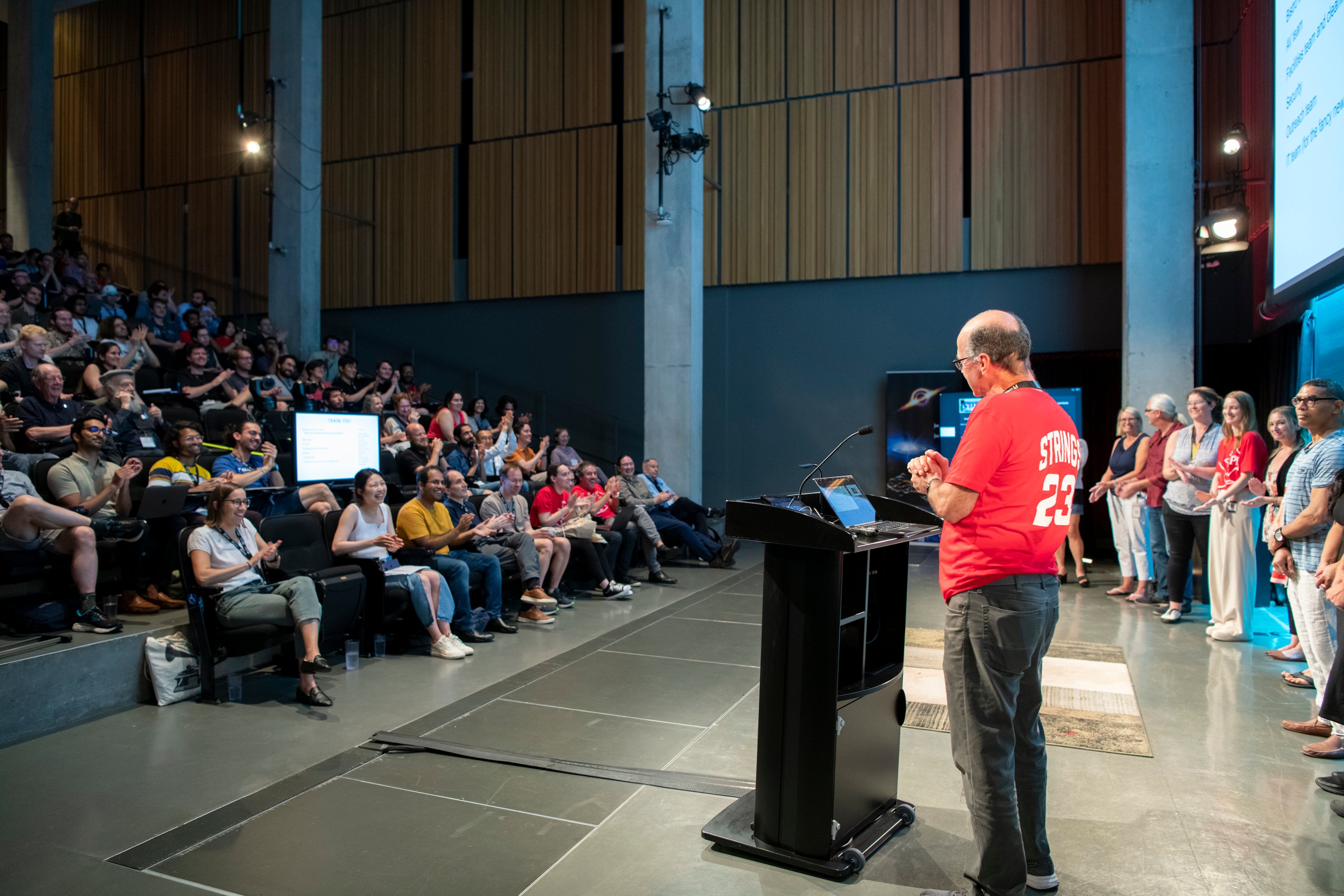By 2008, Perimeter Institute’s founding director, Howard Burton, had moved on after successfully beating the odds to establish a growing research institute.
With Burton’s leadership, and committed efforts on the part of its researchers, the Institute had gone from zero to a known quantity on the world stage. Now Perimeter was starting a new chapter and searching for a new executive director.
The Institute’s leaders turned to Neil Turok, who became the executive director of Perimeter from 2008 to 2019. Turok, now Higgs Chair of Theoretical Physics at the University of Edinburgh, also holds the Carlo Fidani Roger Penrose Distinguished Visiting Research Chair in Theoretical Physics at Perimeter, a role that brings him back to Perimeter regularly for research visits and public lectures.
In 2008, Turok was a respected cosmologist at Cambridge University who had authored papers with the famous Stephen Hawking about how the universe might have begun.
Turok had also just won a TED prize. The prize came with an opportunity to pitch his “wish” in front of a room full of entrepreneurs who might invest in the idea. Turok is from South Africa, where his parents had been imprisoned for resisting the apartheid regime, and his wish was to set up a network of math and science education centres in Africa. His dream was to provide training opportunities to talented young African youth who might not otherwise have the opportunity to get science degrees.
Turok believed in the potential of young people, and that the next Einstein could come from Africa, a continent with no shortage of brilliant young people. He had already set up the beginnings of a network known as the African Institute for Mathematical Sciences (AIMS), but he was doing it with little funding and no endowment. He was keen to see it grow.
Around the same time, in 2008, Turok got a call from physicist James Hartle, who was then a colleague from the University of California, Santa Barbara, and who had also collaborated with Stephen Hawking. Hartle told him that Perimeter was looking for a new director.
Turok knew little about Perimeter in Waterloo, but he respected Hartle, and took his advice to consider the position. He met with Perimeter founder Mike Lazaridis in New York, where Turok explained that if he took the role, he also wanted to continue his AIMS project in Africa. Lazaridis assured him this was no problem. In fact, it was a compatible goal because Lazaridis wanted Perimeter to be a global institution. “That sounded very exciting,” says Turok.
When he visited Perimeter in 2008, the Institute was featuring a concert by famed cellist Yo-Yo Ma and his accompanists. The atmosphere was electrifying. Yo-Yo Ma had a deep personal interest in theoretical physics and had been speaking to researchers in the building. The concert was spectacular. “He was high on physics when he performed that night,” Turok recalls.
Turok also says he was impressed with what the first director, Howard Burton, and the Perimeter board had already achieved.
“The easiest thing in the world is to waste money, but they hadn’t. The governing board at Perimeter had ensured the money was spent well. They had recruited excellent faculty and had an established public lecture series that was outstanding.”
Neil Turok: Perimeter takes its place on the world stage
During his time at Perimeter, there was faculty growth across many research areas, but Turok was especially instrumental in the establishment in 2016 of Perimeter’s Centre for the Universe, a research hub in cosmology. Together with founding partners, the Canadian Institute for Theoretical Astrophysics (CITA); the Dunlap Institute at the University of Toronto; Queen's University/SNOLAB; the University of Guelph; the Centre for Astrophysics at the University of Waterloo; and York University, it encouraged the growth of theoretical physics research into new astrophysics initiatives.
Perimeter also began to participate more frequently in large international science collaborations, including the Event Horizon Telescope and CHIME. Although Perimeter is a place of blackboards and computers rather than telescopes and instruments, the expertise of its scientists are vital to drawing back the curtain on the distant cosmos, especially in the era of multi-messenger astronomy, when data from multiple sophisticated instruments can be analyzed to give us unique new vistas into the universe.
These initiatives helped put Canada on the map in the field of astrophysics.
It was through Turok’s connection to Hawking that Perimeter was able to bring the world-famous celebrity physicist to the Institute for a six-week visit in 2010, and again in 2012. That drew considerable international media attention.
Not only did the Institute’s international reputation grow, but the building’s physical presence grew as well. A major expansion in 2010 doubled the size of Perimeter’s facility and was given the name the Stephen Hawking Centre.
One of Perimeter’s most successful training initiatives, the Perimeter Scholars International Master’s program, was established in 2009 under Turok’s leadership, in partnership with the University of Waterloo. Perimeter also expanded opportunities for PhD and postdoctoral researchers as well.
“I had this experience in Africa, focused on young people, and it was an absolute joy to see young people, especially from disadvantaged backgrounds, absolutely galvanized by the latest problems in computer science, maths, and physics,” Turok says.
“I saw the incredible benefits of training programs that attract the most determined young people who absolutely adore maths, physics, and science. When I came to Perimeter, I knew that was the key – that if you really want to energize an institution, you need to create the best possible environment for young people,” he adds.
Perimeter’s educational outreach department also expanded its reach during Turok’s years as director. The Perimeter Institute Teacher Network was established, and to this day, it serves as a connection hub that provides Canadian and international high school science teachers with world-class professional development workshops.
These teachers, in turn, take what they’ve learned to their own classrooms, but also to other teachers in their home countries. These training session and accompanying resources deliver fresh, inspiring lessons in modern physics, and the bright young students who learn from them go on to be part of the talent pipeline in physics, for universities, institutes, and industry everywhere.
Politicians of every political stripe came for visits. Both Prime Minister Stephen Harper and Prime Minister Justin Trudeau visited Perimeter while Turok was executive director. Both governments announced new funding for the Institute, inspired by what Perimeter was doing for the profile of Canadian science on the world stage. During Prime Minister Justin Trudeau’s visit, he famously explained quantum computing to the delight of the audience.
Perimeter also had a starring role as a lead partner of Innovation150, a signature celebration of Canada’s sesquicentennial in 2015. Perimeter Institute was becoming a well-known champion of Canadian science, across the country. The Institute put on travelling exhibitions, major city-wide festivals, and created dynamic online experiences.
What amazes Turok to this day is the amount of interest the general public has for theoretical physics. Although the Institute’s work is scientific, the questions it addresses are part of a human spiritual quest that has existed from the beginnings of human history, and lie at the heart and soul of humankind, he says.
“It is a subject that taps into the most basic questions that we have about ourselves and why we exist at all. It's accessing something spiritual in human beings.”
When Turok handed off leadership of the Institute to his successor, Rob Myers, in 2019, the Institute had earned its national and international reputation.
Rob Myers: Perimeter grows as a global gathering place
Creating a new institute from the ground up involved much more than recruiting a team of researchers. It meant inventing countless new support systems, structures, and programs to keep the whole place running.
Rob Myers didn’t become director until 2019, but he was a founding faculty member, and a guiding force throughout its 25 years.
He helped to create and build the institute. As director, he added new dimensions to it. He helped solidify Perimeter’s standing as a globally recognized theoretical physics institute.
He played a key role in recruiting exceptional scientists, and built up the Institute’s nine research areas: quantum fields and strings (where his own research lies), quantum foundations, quantum information, quantum gravity, strong gravity, quantum matter, particle physics, cosmology, and mathematical physics.
Myers oversaw the establishment of the new Clay Riddell Centre for Quantum Matter, a research hub focused on uncovering and discovering new states of matter. Also, under his guidance, Perimeter launched the Quantum Causal Inference Initiative, that is all about extracting cause-and-effect insights from large statistical datasets. The hope is that discoveries made there can make artificial intelligence much more powerful in predicting complex networks of cause and effect.
It was also during his term as director that the Perimeter Institute Quantum Intelligence Lab, also known as PIQuIL, was established. This lab has garnered national and global attention for its innovative work at the crossroads of artificial intelligence and quantum computing.
Myers was the director who had the difficult task of steering the Institute through the Covid-19 pandemic crisis. The pandemic lockdown was especially difficult for an institution like Perimeter, where faculty and students work together through interactive collaboration. But with a steady hand, Myers, with the creative input of all of Perimeter residents, was able to keep employees, faculty, and students safe, while maintaining the pace and scope of teaching and research. After a gradual and safe reopening, Perimeter re-emerged as a still-thriving institution.
During his tenure, Myers also helped to ensure that brilliant women physicists, who are underrepresented in physics everywhere, would feel welcome as part of the Institute’s research community, and was a co-lead on the Simons Emmy Noether fellowship program that supports early career women in physics.
He played a key role in building Perimeter’s world-renowned conference program, which now draws nearly a thousand of scientists from around the world for workshops and talks every year.
In 2023, Perimeter hosted the Strings 2023 conference: the premier international gathering for string theorists worldwide and one of the largest conferences in theoretical physics.
The 2023 edition drew more than 200 scientists from around the globe, while many others attended online. Juan Maldacena, the Argentine theoretical physicist who is credited as a pioneer and developer of the extremely influential holographic duality (a part of the ongoing search for a theory of quantum gravity), gave a public lecture that served as a highlight of the event
It was tribute to how far Perimeter has come since 2000, from just a few people to a globally respected institute that can draw together scientific luminaries from around the world.
“We have amazing researchers here who are producing new ideas, but we are also part of a bigger community. One of the great things about Perimeter is that we can easily hold conferences on topics at the cutting edge of research. Over the years, we have brought thousands of really outstanding physicists together in Waterloo,” Myers says.
By the time that Myers handed over the role of executive director to Marcela Carena, a distinguished scientist recognized for her expertise in particle physics in 2024, Perimeter was on a solid platform to launch into the next 25 years of theoretical physics.
This is part three in a series celebrating Perimeter’s history for the Institute’s 25th anniversary celebrations. You can find part 1 here, and part 2 here. Stay tuned for the next chapter, as we explore the outlook for Perimeter’s future.
About PI
Perimeter Institute is the world’s largest research hub devoted to theoretical physics. The independent Institute was founded in 1999 to foster breakthroughs in the fundamental understanding of our universe, from the smallest particles to the entire cosmos. Research at Perimeter is motivated by the understanding that fundamental science advances human knowledge and catalyzes innovation, and that today’s theoretical physics is tomorrow’s technology. Located in the Region of Waterloo, the not-for-profit Institute is a unique public-private endeavour, including the Governments of Ontario and Canada, that enables cutting-edge research, trains the next generation of scientific pioneers, and shares the power of physics through award-winning educational outreach and public engagement.
You might be interested in

Turning Points: 27 Ways Perimeter Institute Has Changed the Course of Physics
August 8, 2025


Battle of the Big Bang: New Theories Changing How We Understand the Universe
June 5, 2025

